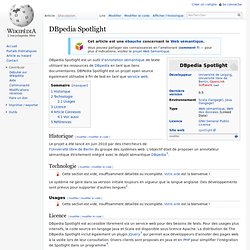

Plan & Pricing. Do you have educational and non-profit pricing?

We are happy to support educational institutions that use Semantria for academic purposes. Pricing for educational institutions is 50% off the original package price. This can also be offered to certain non-profit organizations. Please contact sales@semantria.com for more details. What is the cancellation policy? You may cancel your subscription package by providing 30 days notice to the Semantria sales team, sales@semantria.com. How can I change plans? You can upgrade at any time by logging into your Semantria account and upgrading your package, or by contacting sales@semantria.com. Users looking to downgrade their subscription package should contact sales@semantria.com. What is a transaction? Transactions are the number of documents (tweets, articles, etc) you send to the API for analysis. 100 articles = 100 transactions 300 tweets = 300 transactions For Excel users, every document should be entered into a new row of the same column.
None! 48722-indexation-visuelle-et-recherche-d-images-sur-le-web-enjeux-et-problemes.pdf. Topic Modeling and Visualization of Knowledge Forum Discussion. Multidimensional scaling. Types[edit] Classical multidimensional scaling Also known as Principal Coordinates Analysis, Torgerson Scaling or Torgerson–Gower scaling. Takes an input matrix giving dissimilarities between pairs of items and outputs a coordinate matrix whose configuration minimizes a loss function called strain.[1] Metric multidimensional scaling A superset of classical MDS that generalizes the optimization procedure to a variety of loss functions and input matrices of known distances with weights and so on.
Non-metric multidimensional scaling In contrast to metric MDS, non-metric MDS finds both a non-parametric monotonic relationship between the dissimilarities in the item-item matrix and the Euclidean distances between items, and the location of each item in the low-dimensional space. Louis Guttman's smallest space analysis (SSA) is an example of a non-metric MDS procedure. Generalized multidimensional scaling Details[edit] The data to be analyzed is a collection of The goal of MDS is, given Δ, to find. Analyze Text Similarity with R: Latent Semantic Analysis and Multidimentional Scaling.
Critere-pertinence-moteurs.jpg (Image JPEG, 1000x5783 pixels) DBpedia Spotlight. Un article de Wikipédia, l'encyclopédie libre.

DBpedia Spotlight est un outil d'annotation sémantique de texte utilisant les ressources de DBpedia en tant que liens documentaires. DBPedia Spotlight est un projet open source également utilisable à fin de test en tant que service web. Historique[modifier | modifier le code] Le projet a été lancé en juin 2010 par des chercheurs de l'Université libre de Berlin du groupe des systèmes web. L'objectif était de proposer un annotateur sémantique étroitement intégré avec le dépôt sémantique DBpedia[1]. Technologie[modifier | modifier le code] Le système ne gère dans sa version initiale toujours en vigueur que la langue anglaise. Usages[modifier | modifier le code] Licence[modifier | modifier le code] DBpedia Spotlight est accessible librement via un service web pour des besoins de tests. Article Connexes[modifier | modifier le code] Voir aussi[modifier | modifier le code] Annotation sémantique. Un article de Wikipédia, l'encyclopédie libre.

L'annotation est le processus qui consiste à attacher des informations complémentaires au contenu textuel d'un document. L'annotation sémantique consiste à relier ces contenus à des informations précises (on parle parfois de métadonnée) en relation avec l'identité sémantique des données annotées. De plus en plus fréquemment, on considère la tâche d'annotation sémantique comme l'un des aspects applicatifs du Web sémantique. Applications[modifier | modifier le code] L'Annotation sémantique est une tâche de fouille de texte proche des méthodes de Traitement automatique du langage naturel qui consiste à étiqueter dans un document les mots avec des liens qui pointent vers une description sémantique. On peut ainsi définir l'annotation sémantique comme la tâche permettant de déterminer l'identité exacte d'un concept contenu dans un texte et de fournir des informations sur ce concept[2].
Fonctionnement[modifier | modifier le code]